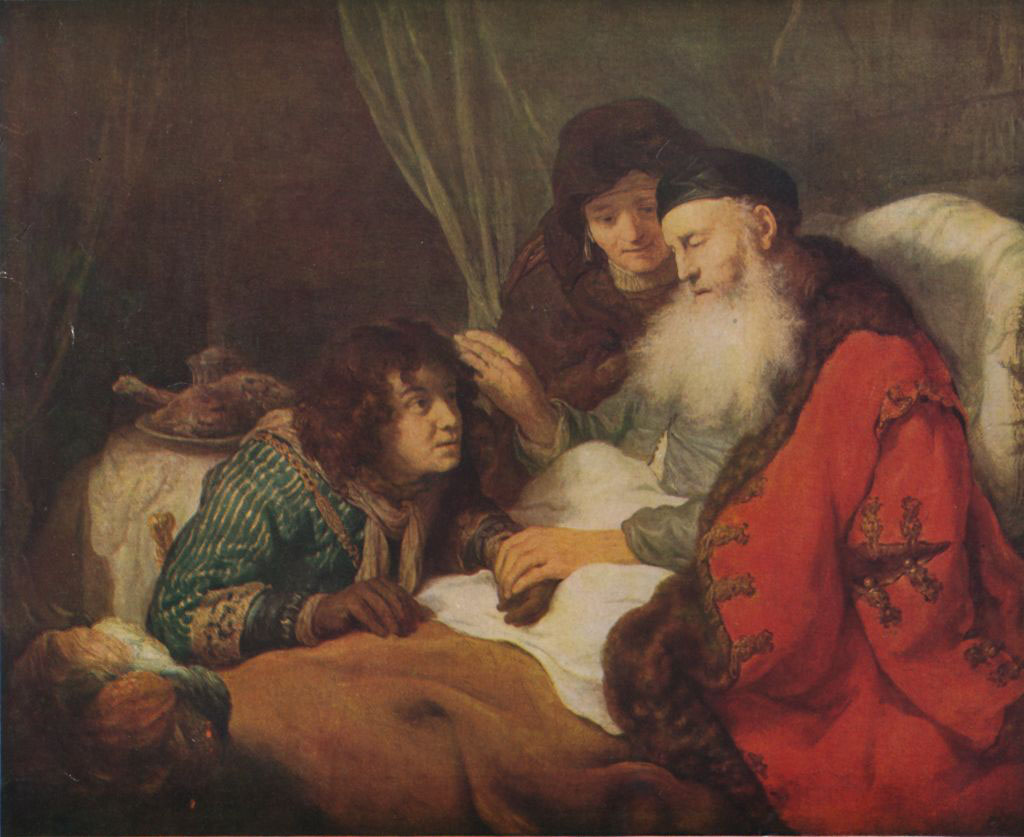Last year, about two hundred red haired Israeli Jews gathered for a “>Stav Shaffir, the barely thirty year old Member of the Knesset whose hair is vibrant red. Stav, by the way, is Hebrew for Autumn.
There is even Hebrew slang for redheads: gingi (Jeenji) for a male and gingit (Jeenjit) for a female, both Hebraicized corruptions of the English ginger.
What’s with Jews and red hair?
The Jewish connection to red hair turns out to be quite complex. The first possible references to redheaded Jews appear, not surprisingly, in the Tanakh, the Hebrew Bible. Two well-known personalities, Esau and David, are described as admoni, meaning red or ruddy. (See Gen. 25:25; 1 Sam. 16:12, 17:42.)
Some commentators leap quickly from admoni to red hair, but there is both more and less here than meets the eye. With respect to Esau, the text suggests that he was red and hairy all over, but admoni also serves as a pun for Edom, whose residents were said to be descendants of Esau. (See Gen. 36:9.). When used regarding David, the reference is even more obscure, and does not clearly involve hair. Rather, it is more suggestive of a ruddy complexion.
Even if the two references were to red hair, they provide no consistent signal or message or even information because the two men are viewed quite differently. David, the poet-warrior and king of united Israel, has been idealized, the founder of a royal dynasty that God promised to last forever. (See 2 Sam. 7:12-16; 1 Kings 9:4-7, 11:36, 15:4; 2 Kings 8:19.) By contrast Esau has been marginalized in the Hebrew Bible. Tricked by his younger twin brother Jacob, the patriarch to be, Esau traded his birthright for a bowl of red lentil stew, later married two Canaanite women and a daughter of Ishmael and is viewed as the progenitor of the Edomites. (See Gen. 25:30-34, 26:34, 28:9, 36:1-3, 9.)
In any event, these two instances of red hair, if that is what they are, seem isolated instances in the Tanakh, and not particularly indicative of anything worthy or special. To the contrary, black hair was view as normal, even idealized. (See Eccles. 11:10; Song of Songs 5:11.)
Of course, whether Esau and even David actually existed is open to question, and the description of hair as red may have been more a literary device than actual reporting. Or not. In 2000, “>here.) So the notion of red haired Jews during biblical times may not have been entirely fanciful.
Many centuries later, in English drama and literature, two Jews were portrayed with red hair and quite unfavorably. William Shakespeare’s Shylock was frequently costumed with red hair, really a fright wig, in productions of The Merchant of Venice. (See “>Queen Elizabeth I. As the “>250 references to Fagin as “the Jew,” and Dickens did not mean it in a nice way. Nor did he temper his portrayal with humanistic utterances. Still, his selection of red hair for Fagin was not necessarily part of the seemingly anti-Semitic package. It surely could have been the literary equivalent of the fright wig associated with Shylock, but it may also or additionally have been meant to be one in a “>marker of low moral character, of fiery hot tempers, of violence, of suspiciousness.” (See also, “>warriors and could rescue their fellow Jews from whatever was the persecution of the day.
Esau and David, Shylock and Fagin, and di royte yidn, notwithstanding, red hair was and is not a predominant trait of Jews. Hair color, like other traits, is determined genetically, of course, and, in this instance, by the production and regulation of two pigments by the melanocortin 1 receptor (“MC1R”) gene found in chromosome 16. But MC1R is not like the “>BRCA1 and BRCA2 mutations which are markers, or genetic signals, for early onset breast cancer.
The MC1R gene appears to be recessive. Typically, for an individual to be born with red hair, both parents must be carriers of an MC1R gene and the MC1R gene from both must combine in the fertilized egg. MC1R operates on two pigments, eumelanin and pheomelanin, and, in general, the more of the latter, the redder the hair. But MC1R is also quite variable, and may be subject to being influenced by modifiers. In fact, according to “>complicated.”
While human hair color varies enormously, from the lightest blonde to the darkness black, red hair manifests itself only in about 1% of humans worldwide. (See “>Jewish Encyclopedia published in 1906 contains several tables which collect various observations of hair color in Jews around the world. One table concerns Jewish school children in Central Europe (Austria, Bavaria, Germany and Hungary). While most of the children are indicated to have brown or black hair, approximately one quarter to one-third of these children are said to have blond hair. The incidence of red hair is less than 1%. A second table concerns hair color among Jews in selected countries throughout Europe. While dark hair again predominates, the frequency of red hair often appears to be 2% or higher, reaching more than 4% in Poland, Galicia and Russia. The information is of doubtful value, however. Among other problems, the size of the sample populations differs greatly from country to country and the method for selecting the individuals is unknown.
A somewhat similar review occurred in New York City, the results of which were published in 1903 by Maurice Fishberg, a physician and anthropologist, in the American Anthropologist in a paper titled ” target=”_blank”>www.judaismandscience.com
































